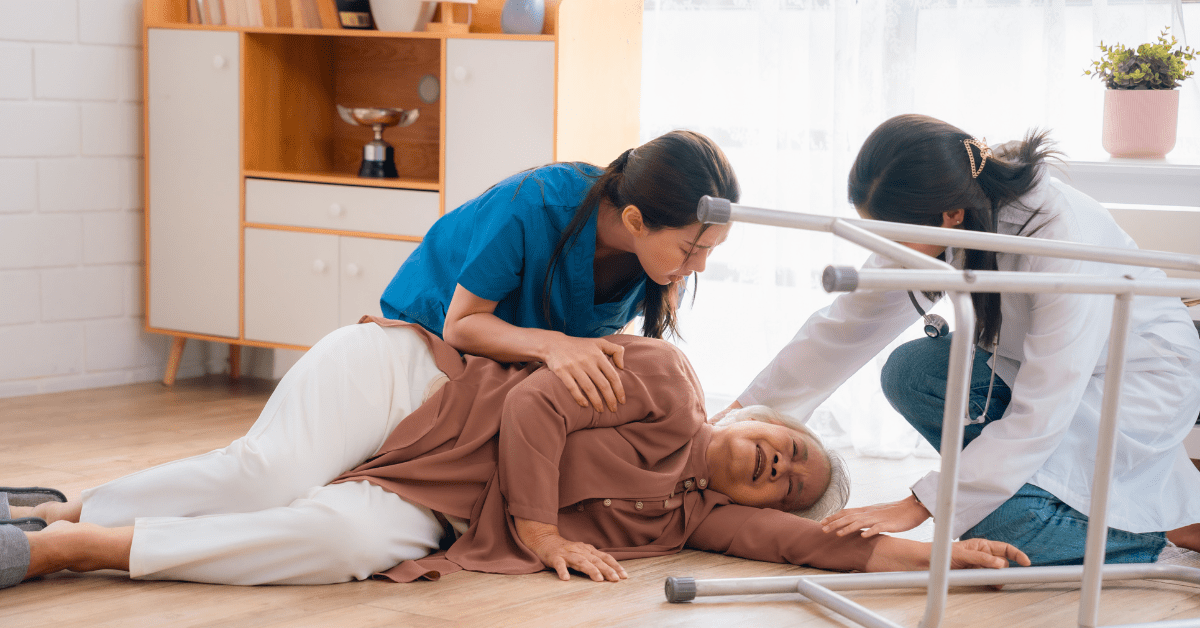
Your heart probably skips a beat when you think about your senior loved one falling. Those worries aren’t unfounded. Fall prevention deserves your immediate attention when exploring assisted living in New Berlin, WI. Here’s what brings hope: most falls can actually be prevented when you know the right strategies. You can’t protect what you don’t understand. Recognizing fall risks helps create better environments for your loved one at an assisted living community
Physical and Medical Strategies to Prevent Falls
The good news? You can take certain steps to protect your loved one through targeted physical and medical approaches. These strategies work particularly well for seniors in assisted living environments.
Exercises to improve strength and balance
Physical activity emerges as your strongest ally in fall prevention. These three exercises are recommended:
- Tai Chi – Reduces both fall risk and fractures, especially for those at low risk
- Otago Exercise Program – These 17 carefully designed strength and balance exercises cut falls by 35-40% for frail older adults
- SAIL (Stay Active and Independent for Life) – A gentle strength, balance and fitness program that meets three times weekly
Managing medications that increase fall risk
Some medications your loved one takes might actually increase their fall risk. The encouraging part? A careful medication review can reduce falls. Healthcare providers should examine:
- Psychoactive medications – These include anticonvulsants, antidepressants, antipsychotics, benzodiazepines and opioids
- Blood pressure medications
- Antihistamines and muscle relaxants
The best approach follows three simple steps: stop unnecessary medications, switch to other alternatives when possible or reduce doses to the lowest effective amount. Work closely with your loved one’s health team — never make these changes alone.
Routine health screenings and vision checks
Regular checkups catch problems before they cause falls. Vision problems double fall risk in seniors, which makes annual eye exams essential. These screenings can spot macular degeneration, cataracts and glaucoma — all conditions that significantly increase fall risk. Other valuable screenings include:
- Gait and balance assessments like the Timed Up-and-Go Test
- Physical therapy evaluations
- Vitamin D level checks
Daily Habits That Help Prevent Falls
Sometimes, the smallest changes make the biggest difference. Once they become part of the routine, these adjustments feel natural.
Wearing proper footwear
Check that your loved one’s shoes have:
- Non-slip soles with good traction
- Low heels (no higher than 1 inch)
- A snug but comfortable fit
- Secure closures instead of loose slippers
- Firm support around the heel
Avoiding risky behaviors like climbing or rushing
Simple awareness prevents many falls. Help your loved one understand why certain behaviors increase risk: Taking time with movements prevents stumbles, keeping everyday items within easy reach eliminates dangerous reaching, avoiding ladders or step stools removes unnecessary hazards or watching for pets underfoot, especially at night.
Supportive Tools and Community Interventions
Using walkers, canes and mobility aids correctly
Getting the right mobility aid is only half the battle. When you’re helping select a walking aid:
- The height matters more than you might think—the handle should line up with the wrist crease when arms hang naturally at the sides
- Match the aid to their needs—canes can support up to 25% of body weight, while walkers handle 50% or more
- Check those rubber tips regularly because worn tips turn a helpful tool into a hazard
Family involvement in fall prevention planning
You know your loved one better than anyone else. Family caregivers bring insights that staff simply can’t match. You understand their habits, their fears and the little details about their daily routines that matter. Quality communities welcome your input during care planning meetings. They want to hear about what works at home and what concerns you’ve noticed. This partnership creates better prevention strategies that actually fit your loved one’s life.
Protecting Your Loved One
Fall prevention works when everyone collaborates—residents, families and care teams all play important roles. Your loved one’s well-being depends on this partnership and your voice matters in planning their care.
The effort you put into fall prevention today protects more than just physical health. It helps your loved one stay confident, remain independent and enjoy their time with peace of mind. Contact us at (262) 789-6600 to schedule a tour of our assisted living, Heritage at Deer Creek.
FAQs
Q1. What are the most effective strategies for preventing falls in assisted living communities? The most effective strategies include doing regular exercise to improve strength and balance, managing medications that increase fall risk, conducting routine health screenings, ensuring proper footwear and using supportive tools like walkers and canes correctly.
Q2. How can family members contribute to fall prevention in assisted living? Family members play a vital role by providing insights about the resident’s home environment and participating in care planning discussions. Their involvement ensures better communication and more effective prevention strategies.


